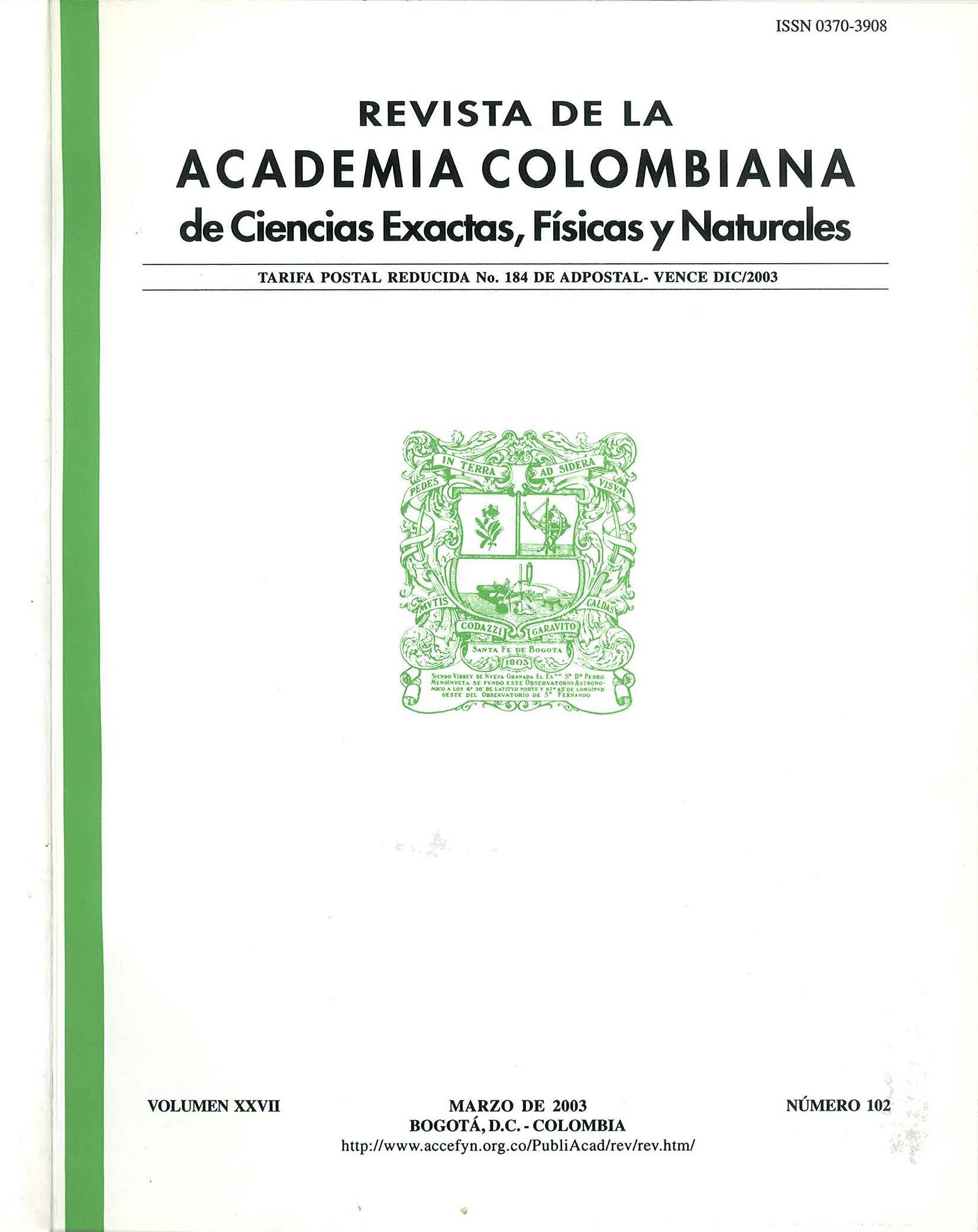Resumen
Las células T responden a antígenos desnaturados o proteolizados, mientras la mayoría de anticuerpos contra proteínas nativas prefieren la conformación nativa, particularmente en proteínas globulares. Se ha observado que anticuerpos monoclonales contra la proteína Pfs25 de P. falciparum, bloquean la transmisión de la malaria del humano al mosquito. Uno de estos anticuerpos, el 4B7, se une débilmente al péptido lineal ILDTSNPVKT, para el cual se ha propuesto teóricamente una estructura en forma de bucle “beta-hairpin”. Esta predicción se basa en estructuras de proteínas similares al factor de crecimiento epidermal por RMN y por el algoritmo de GORBTURN. Se sintetizaron péptidos lineales y con restricción conformacional a bucle para determinar cuál imitaba mejor el epítope presente en la proteína Pfs25. Al titular por el ensayo de ELISA el anticuerpo 4B7 y un suero de conejo antigametos contra los péptidos, estos anticuerpos mostraron poca reacción con el péptido lineal y una fuerte reacción con un péptido con estructura en bucle.
Referencias
Allen, P.M. & E.R. Unanue. 1984. Differential requirements for antigen processing by macrophages for lysozyme-specific T cell hybridomas. J. Immun. 132: 1077-1079.
Alexander, H., Johnson, D.A., Rosen, J., Jerabek, L., Green, N., Weissman, I.L. & R.A. Lerner. 1983. Mimicking the alloantigenicity of proteins with chemically synthesized peptides differing in single amino acids. Nature 306: 697-699.
Amit, A.G., Mariuzza, R.A., Phillips, S.E.V. & R.J. Poljak. 1986. Three-dimensional structure of an antigen-antibody complex at 2.8 Å resolution. Science 233: 747-753.
Arrhenius, T. & A.C. Satterthwait. 1990. Peptides: structure and biology (Proceedings of the 11th American Peptide Symposium). ESCOM, Leiden, pp. 870-872.
Barr, P.J., Green, K.M., Gibson, H.L., Bathurst, I.C., Quakyi, I.A. & D.C. Kaslow. 1991. Recombinant Pfs25 protein of Plasmodium falciparum elicits malaria transmission-blocking immunity in experimental animals. J. Exp. Med. 174: 1203-1208.
Beachey, E.H., Seyer, J.M., Dale, J.B., Simpson, W.A. & A.H. King. 1981. Type-specific protective immunity evoked by synthetic peptide of Streptococcus pyogenes M protein. Nature 292: 457-459.
Burton, D.R. & I.A. Wilson. 2001. Crystal structure of a neutralizing human IgG against HIV-1: a template for vaccine design. Science 293: 1155-59.
Cabezas, E. & A.C. Satterthwait. 1999. The hydrogen bond mimic approach: solid-phase synthesis of a peptide stabilized as an a-helix with a hydrazone link. J. Amer. Chem. Soc. 121: 3862-3875.
Calvo, J.C., Barrera, N.F., García, J.A., Guzmán, F., Espejo, F. & M.E. Patarroyo. 1999. Síntesis de la oxitocina en fase sólida usando terbutoxicarbonilo y fluorenilmetoxicarbonilo derivados. Rev. Colomb. Quim. 28(1): 19-25.
Calvo, J.C. & A.C. Satterthwait. 2000. Identificación de un epítope conformacional en el extremo carboxilo de la proteína MSP-1 de P. falciparum. Rev. Colomb. Quim. 29(2): 15-23.
Chiang, L.C.; Cabezas, E.; Calvo, J.C. & A.C. Satterthwait. 1992. Peptides: biology and structure (Proceedings of the Chinese Peptide Symposium 1992). Du, Y., Tam, J.P. & Zhang, Y.S. (Eds.), ESCOM, Leiden, pp. 204-206.
Fries, H.C., Lamers, M.B., Smits, M.A., Ponnudurai, T. & J.H. Meuwissen. 1989. Characterization of epitopes on the 25kD protein of the macrogametes/zygotes of Plasmodium falciparum. Parasite Immunol. 11: 31-45.
Geysen, H.M., Barteling, S.J. & R.H. Meloen. 1985. Small peptides induce antibodies with a sequence and structural requirement for binding antigen comparable to antibodies raised against the native protein. Proc. Natl. Acad. Sci. USA 82: 178-182.
Gibrat, J.F., Garnier, J. & B. Robson. 1987. Further developments of protein secondary structure prediction using information theory. New parameters and consideration of residue pairs. J. Mol. Biol. 198: 425-443.
Hutchinson, E.G. & J.M. Thornton. 1994. A revised set of potentials for beta-turn formation in proteins. Protein Sci. 3: 2207-2216.
Jemmerson, R. & R. Blankenfeld. 1989. Affinity consideration in the design of synthetic vaccines intended to elicit antibodies. Molec. Immunol. 26(3): 301-307.
Kaslow, D.C., Quakyi, I.A., Syin, C., Raum, M.G., Keister, D.B., Coligan, J.E., McCutchan, T.F. & L.H. Miller. 1988. A vaccine candidate from the sexual stage of human malaria that contains EGF-like domains. Nature 333: 74-76.
Kline, T.P., Brown, F.K., Brown, S.C., Jeffs, P.W., Kopple, K.D. & L. Mueller. 1990. Solution structures of human transforming growth factor a derived from 1h NMR data. Biochemistry 29: 7805-7813.
Lerner, R.A. 1983. Synthetic vaccines. Scient. Am. 248(2): 66-74.
Patarroyo, M.E., Romero, P., Torres, M.L., Clavijo, P., Moreno, A., Martinez, A., Rodriguez, R., Guzman, F. & E. Cabezas. 1987. Induction of protective immunity against experimental infection with malaria using synthetic peptides. Nature 328: 629-632
Saphire, E.O., Parren, P.W.H.I., Pantophlet, R., Zwick, M.B., Morris, G.M., Rudd, P.M., Dwek, R.A., Stanfield, R.L., sequence of the 25 kD surface protein of P. falciparum recognized by transmission-blocking monoclonal antibodies: implications for synthetic vaccine development. Parasite Immunol 11: 425-428.
Sela, M. 1969. Antigenicity: some molecular aspects. Science 166: 1365-1374.
Van Amerongen, A., Sauerwein, R.W., Beckers, P.J.A., Meloen, R.H. & J.H.E.T. Meuwissen. 1989. Identification of a peptide
Wilmot, C.M. & J.M. Thornton. 1988. Analysis and prediction of the different types of beta-turn in proteins. J. Mol. Biol. 203: 221-232.

Esta obra está bajo una licencia internacional Creative Commons Atribución-NoComercial-SinDerivadas 4.0.
Derechos de autor 2023 https://creativecommons.org/licenses/by-nc-nd/4.0

